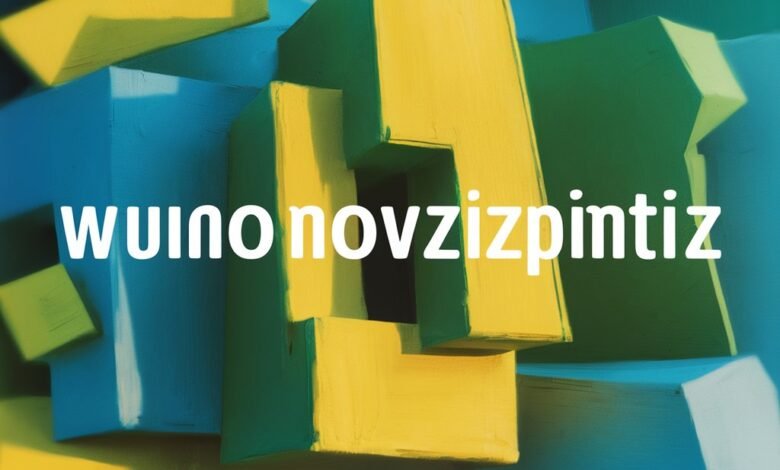Wunonovzizpimtiz: Decrypting the Mysterious Digital Artifact

In the vast expanse of the digital universe, certain strings of characters emerge that defy immediate explanation—cryptic, seemingly random, yet potentially meaningful to those who encounter them. One such enigmatic sequence, “wunonovzizpimtiz,” presents a puzzle that invites both curiosity and analysis. At first glance, it appears to be a jumble of letters without obvious linguistic roots, yet its structure suggests intentional construction rather than pure randomness. This article delves into the possible origins, meanings, and implications of wunonovzizpimtiz, exploring whether it functions as a coded message, a unique identifier, an artistic expression, or something else entirely. By examining its linguistic patterns, potential cryptographic significance, and cultural context, we aim to uncover the layers of meaning—or deliberate obscurity—behind this perplexing string of characters.
1. Linguistic Analysis: Is There a Hidden Pattern or Meaning?
The term “wunonovzizpimtiz” resists easy classification within any known language, yet its composition invites speculation about underlying structures. Breaking it down, we notice the repetition of the “zi” sequence, which appears twice, potentially serving as a rhythmic or syntactic anchor. The prefix “wunono” could be a playful distortion of “uno” (Spanish for “one”) or a nod to “wunder” (German for “wonder”), while “pimtiz” might evoke “pivot” or “pixie,” though these connections remain speculative. The absence of vowels in certain segments (e.g., “vzizp”) aligns with constructed languages or cipher techniques that omit vowels for brevity or encryption. Alternatively, wunonovzizpimtiz could be an acronym, with each letter representing the initial of a phrase—though without context, decoding this is challenging. Its length (13 characters) and mixed-case-free presentation suggest it might be a machine-generated token, such as a password, API key, or part of a procedural naming system in software development.
2. Cryptographic Possibilities: Could This Be a Code or Hash?
In the realm of cryptography and cybersecurity, strings like wunonovzizpimtiz often serve specific functions. It could be:
- A base64 or hexadecimal encoding of binary data, where seemingly random letters represent encoded information (though its length doesn’t neatly match common encoding outputs).
- A fragment of a cryptographic hash, such as SHA-256 or MD5, used to verify data integrity or authenticate users.
- A cipher output, where a plaintext message has been transformed using algorithms like Caesar shift or Vigenère.
- A unique identifier in a database or blockchain, designed to avoid collisions with other entries.
Without additional context or a key, decrypting wunonovzizpimtiz is nearly impossible, but its structure—particularly the repeated “zi”—hints at algorithmic generation rather than human invention. Tools like hash analyzers or frequency analysis might reveal patterns, but its ambiguity could be intentional, serving as a placeholder or inside reference within a closed system.
3. Cultural and Subcultural Contexts: Niche Communities or Artistic Expression?
Beyond technical applications, wunonovzizpimtiz might belong to the realm of subcultures, fandoms, or artistic movements where obfuscation is part of the appeal. Consider:
- Online gaming clans or RPGs, where esoteric names denote membership or in-game lore.
- Experimental music or avant-garde art, where nonsense words challenge traditional semantics.
- Underground digital collectives, using such terms as shibboleths to gatekeep or foster exclusivity.
- Memetic or ARG (Alternate Reality Game) content, designed to engage puzzle-solvers in collaborative decoding.
For example, the “vzizp” segment might resonate with the “vz” prefix popular in cyberpunk aesthetics, while “pimtiz” could echo fictional techno-jargon. If wunonovzizpimtiz originates from such a community, its meaning might only be accessible to initiates, reinforcing group identity through shared linguistic play.
4. Psychological Fascination: Why Do We Seek Meaning in the Arbitrary?
The human brain is wired to detect patterns, even where none exist—a phenomenon known as apophenia. This explains why terms like wunonovzizpimtiz captivate us: they occupy a liminal space between signal and noise, teasing the possibility of hidden significance. In digital spaces, where information overload is the norm, such ambiguity can function as a form of resistance to overinterpretation or a deliberate provocation to question how meaning is constructed. Philosophically, wunonovzizpimtiz challenges the boundary between nonsense and art, asking whether meaning is inherent or imposed by the observer.
5. Practical Implications: From Cybersecurity to Branding
If wunonovzizpimtiz is a machine-generated string, its practical roles could include:
- Password or API key: Randomness ensures security but demands secure storage.
- Placeholder text: Used in prototyping or testing environments.
- Brand or product name: Uniqueness aids trademarking, as seen with brands like “Xzibit” or “Zune.”
However, its obscurity also carries risks. In cybersecurity, such strings might appear in logs as part of an attack payload, warranting scrutiny. Conversely, as a brand name, it could struggle with memorability unless paired with strong visual identity (e.g., “X Æ A-12” by Elon Musk).
Conclusion: Embracing the Enigma
Wunonovzizpimtiz may never yield a definitive explanation—and that’s its power. Whether it’s a cryptographic artifact, an inside joke, or a stroke of digital dadaism, its resistance to categorization mirrors the internet’s capacity for mystery. In an era of relentless data transparency, such anomalies remind us that not everything needs to be decoded to be valued. Perhaps the lesson of wunonovzizpimtiz lies not in solving it, but in appreciating the questions it raises about language, meaning, and the spaces between.



